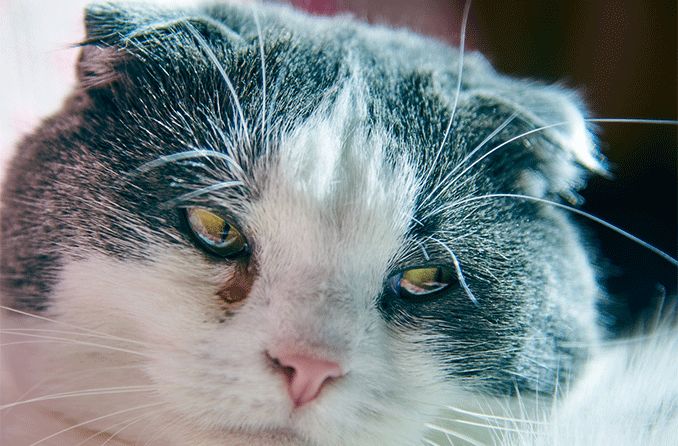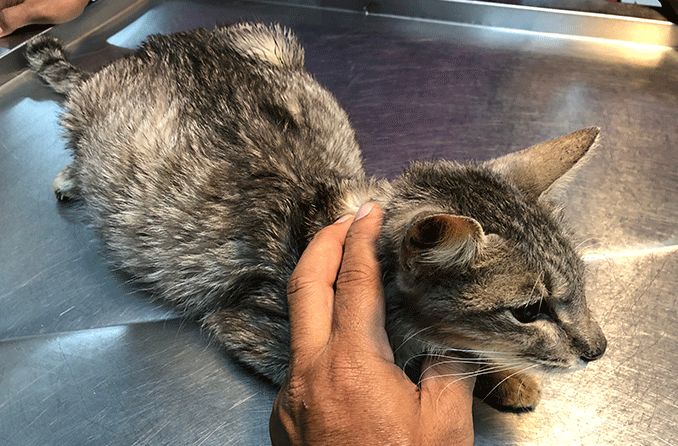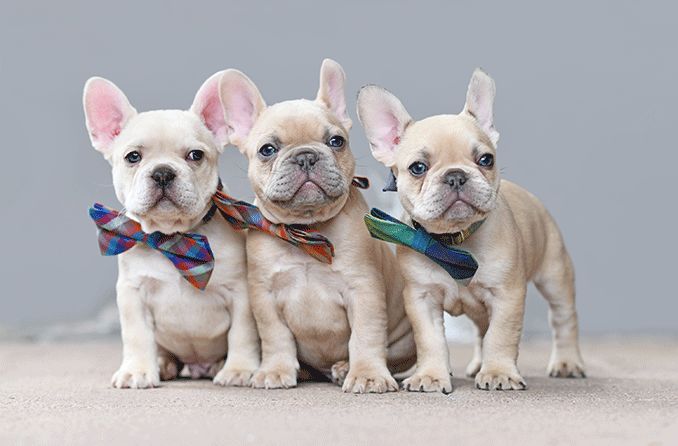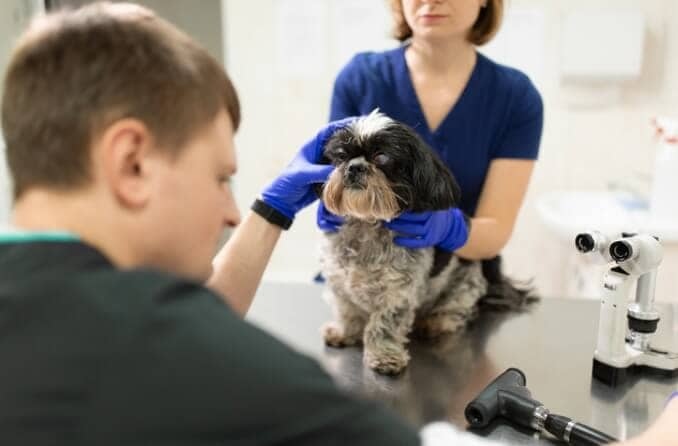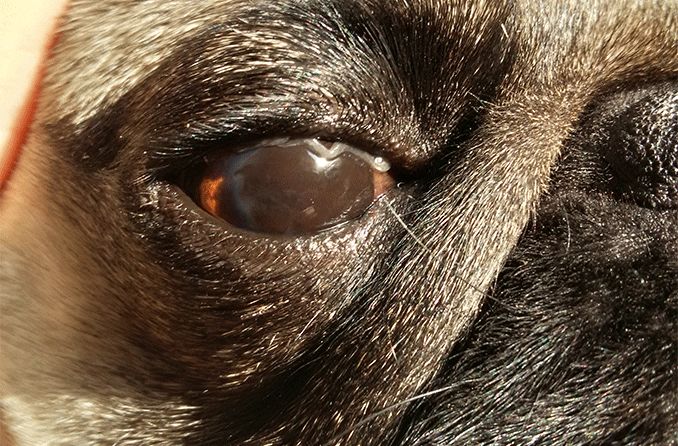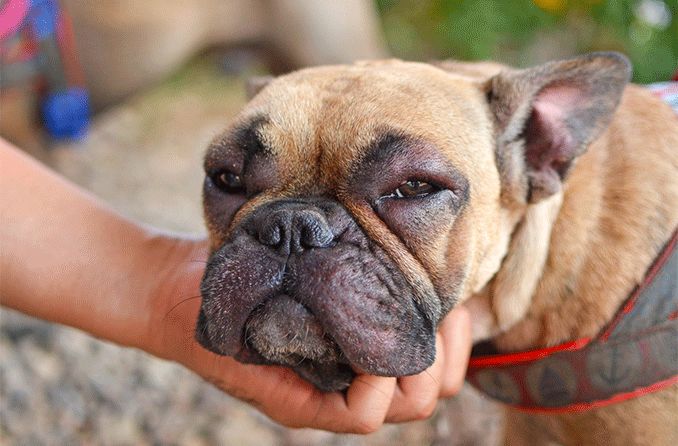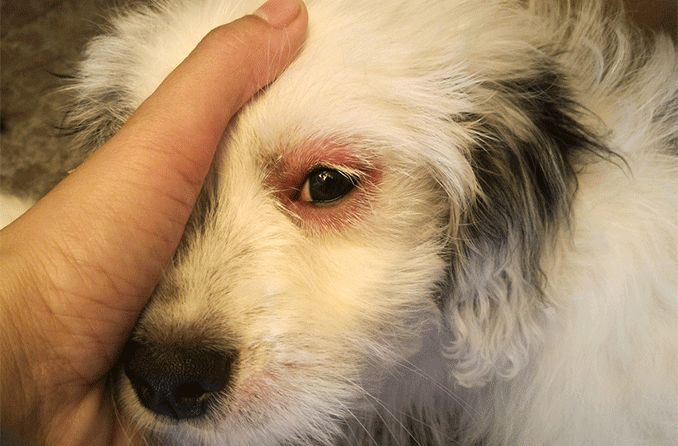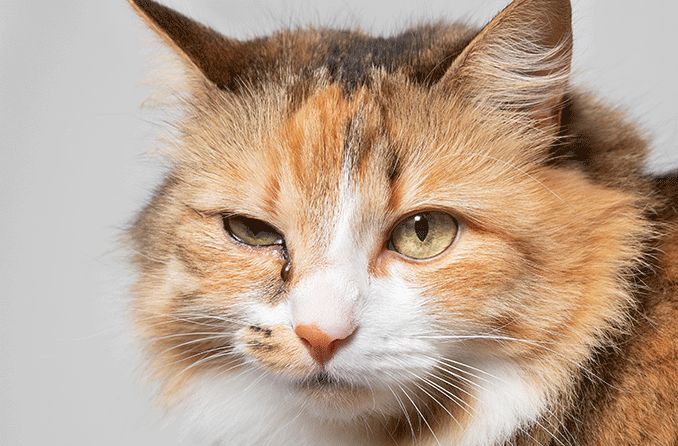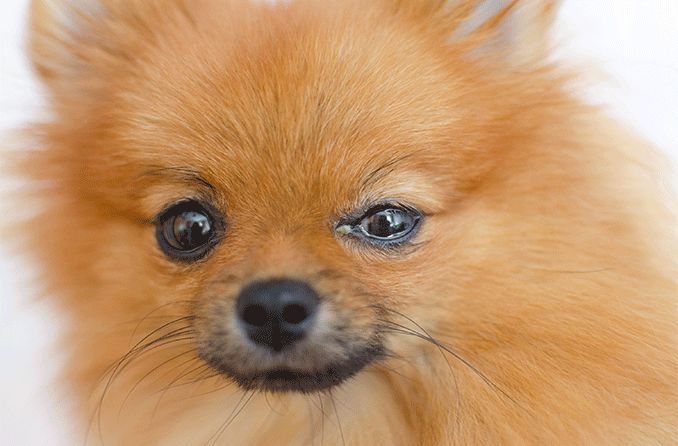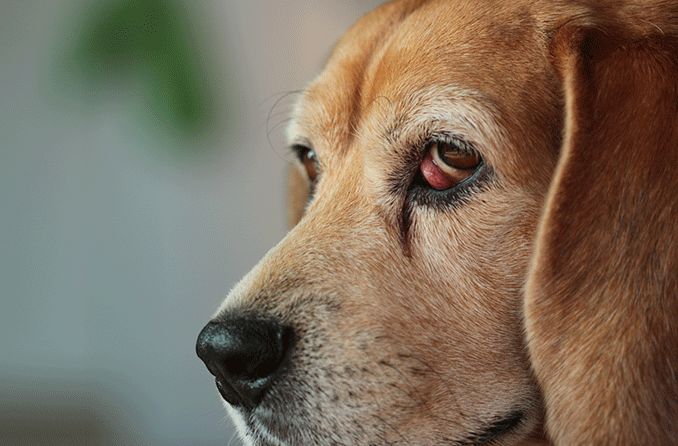Causes
A cat’s eyes may water as the result of a number of triggers, from allergies to serious underlying conditions. These can include:
- Eye allergies
- Feline conjunctivitis
- Upper respiratory infection
- Other various eye infections
- Injury or trauma
- Drainage problems that cause excessive tearing (epiphora)
- Entropion – a hereditary condition that causes the eyelashes to roll inward and scrape against the cornea.
SEE RELATED: What causes eye discharge in cats?
5 reasons your cat’s eyes may be watering
1. Eye allergies
Watery eyes can be triggered by allergens or other irritants, whether indoor, outdoor or both. This can include:
- Mold and mildew
- Dust
- Pollen
- Perfumes
- Household cleaners
- Medications
You can help reduce your cat’s watery eyes and irritation caused by allergies by removing the specific allergen from their environment if possible. If you are unable to detect the culprit, talk to your veterinarian. They can help you identify the problem and may have suggestions for pet-friendly cleaning and home products as well.
If it turns out that your cat is allergic to a certain medication, your veterinarian can prescribe or point you to a different treatment that is more suitable for your pet’s needs.
2. Feline conjunctivitis
Conjunctivitis is the inflammation of the conjunctiva, or the light pink lining around your cat’s eyes, brought on by viruses, bacteria or environmental irritants. The condition can cause redness, swelling and sensitivity to light. It can also cause your cat’s eyes to water or produce discharge.
Feline conjunctivitis often heals on its own, but should still be evaluated by your veterinarian. More serious cases may require the use of topical antibiotics such as eye drops or ointments. Depending on the cause, antivirals may also be prescribed.
If conjunctivitis is left untreated, it can lead to serious damage to your cat’s eye(s). Depending on the severity, this can include vision loss. Speak to your veterinarian if you notice any signs of discomfort, redness, watering or all three and get help for your cat quickly to prevent irreversible damage.
While conjunctivitis can be a serious condition for many cats, it is also common among the species. In fact, most cats will experience a bout of conjunctivitis at least once in their lifetime, whether mild, moderate or severe.
READ MORE: Cat eyes and vision
3. Upper respiratory infection
Upper respiratory infections can be caused by a number of viruses found in kittens and adult cats. These include herpes and calicivirus, as well as chlamydophila felis and bordetella bronchiseptica.
An upper respiratory infection is usually treatable with the right care, but it can be unpleasant for the cat in a number of ways — watery eyes, sore throat, sneezing and fever (among other symptoms).
Antibiotics, anti-inflammatories and/or special eye drops may be prescribed for upper respiratory infections, and it’s important to follow your veterinarian’s instructions closely when caring for your furry companion. Vaccines are also encouraged as a preventive measure. This includes two initial doses and regular boosters.
Cats may contract other types of eye infections, some of which can also cause their eyes to water. Always consult a veterinarian when you notice signs of discomfort or illness in your cat, as the remedy may vary for each underlying cause.
4. Injury or trauma
Eye injuries or trauma to your cat’s eye(s) can cause inflammation, redness and watering. Circumstances can be as mild as getting dirt or sand in the eyes and as severe as a scratch resulting from a tussle with another animal or a grass awn becoming lodged behind the 3rd eyelid.
Regardless of the cause of the injury, it’s important to closely monitor your cat’s condition. Contact a veterinarian immediately for treatment — especially if the injury is severe, if unusual symptoms occur or if you have any other concerns. Treatment will depend upon any of these combined factors.
5. Epiphora
Excessive tearing in cats is often referred to as “epiphora.” This is not a condition, but a specific symptom of more serious diseases and other health problems in cats.
Under normal circumstances, a cat will produce a certain amount of tears to lubricate the eyes. The excess fluid is drained in the nasolacrimal ducts, which lead to the nose. This process keeps eyes moisturized at healthy levels and drains away dust and other particles trapped by the tears. However, if the tear ducts are blocked for any reason, this fluid is not absorbed properly and excessive tearing (epiphora) can occur. This can cause staining beneath the eyes and irritation of the skin around the eyes. Fur may also be wet in the area surrounding the eyes.
Veterinarians can treat blocked nasolacrimal ducts by flushing them with special instruments. If epiphora was caused by underdeveloped tear ducts or a more serious condition such as entropion, surgery may be required for treatment. Both flushing procedures and surgical treatments are performed while your cat is under anesthesia.
Treatment
The treatment for a cat’s eyes watering depends on the underlying cause, and can range from eye drops to surgery. While some conditions are treatable at home, more severe cases such as infections and injuries require immediate medical attention.
Cases of eye allergies may be treated with artificial tears and by removing the allergen from your cat’s environment. Infections such as conjunctivitis, upper respiratory infection (sometimes referred to as cat flu) or other types of infection may require prescribed treatments or antibiotics. Injuries and other conditions that have caused watering eyes in your cat should receive treatment based on their severity.
Mild cases of watering eyes are usually easily treated, but it doesn’t hurt to contact a vet to discuss your concerns. Some cases can indicate a larger problem, while others may just be a sign of allergies. Your veterinarian will provide you with the proper solution no matter the case.
Risk factors
Some cats are naturally prone to watery eyes and discharge. This is often due to the breed and how the eyes sit on the face. Flat-faced cat breeds such as Persians and exotic shorthairs commonly experience tearing as a result of their face shape and structure.
The shorter the muzzle, the less room there is for proper drainage from the eyes to the tear ducts that lead to the nose. This results in excessive tearing, wet and stained fur in these particular breeds.
Additionally, if your cat’s tear ducts did not develop correctly in the early stages of life, eye problems including watering, infections or other conditions that produce excessive watering or discharge can occur down the road.
Environmental problems like allergies can also play a role in the intensity of your cat’s eyes watering. Luckily, eye allergies are often easily treated.
Talk to your veterinarian about the best care for your cat if they have a shorter muzzle or any related problems that could cause watery eyes.
The outlook
Don’t hesitate to call a vet if your cat is in pain or shows signs of infection, injury or other notable eye conditions. Many cases of watery eyes in cats are due to mild underlying causes such as allergies, but the watering can also be a sign of a severe condition that requires immediate attention from a veterinarian.
Certain breeds may also simply be prone to watering eyes due to their eye or face shape. Treatment in this case sometimes simply requires additional monitoring and increased hygienic measures to keep the eye area clean.
Be sure your cat sees the veterinarian for regular checkups as well. Your pet should stay up-to-date on vaccines and other preventive services. This can help with his or her overall health, including critical eye and vision health.
READ NEXT: Is your cat causing your eye allergies?
